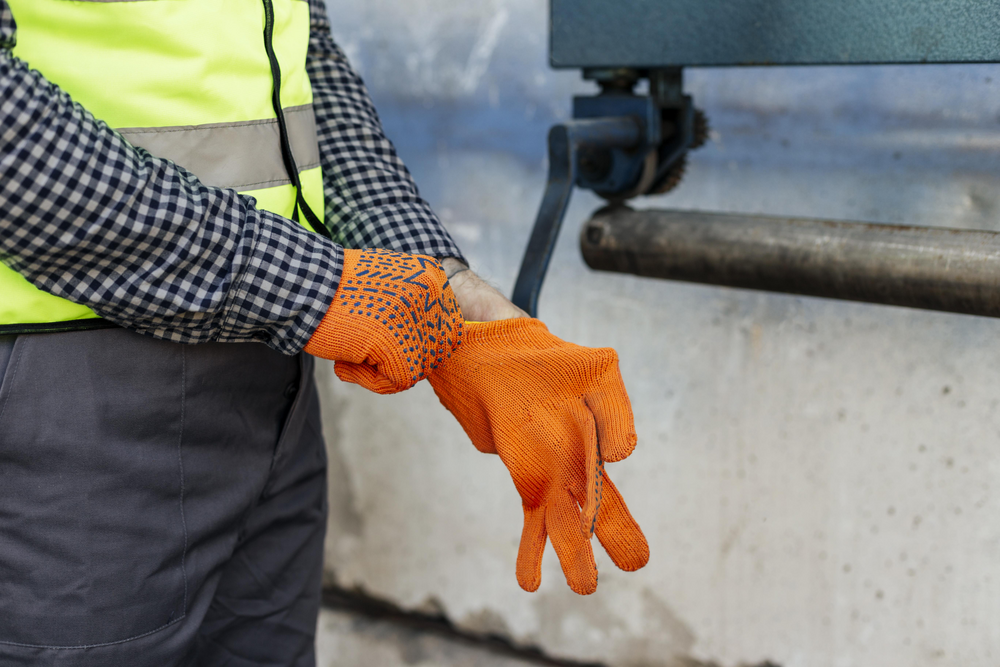Selecting the correct hand protection for your squad is not as easy as choosing any pair of gloves in the store. Different job sites, risks, and tasks call for various gloves; improper selection could expose your employees to injury.
Before deciding on chemical-resistant gloves, cut-resistant gloves, or general-purpose work gloves, be sure you ask the appropriate questions. Here's what you should be thinking about to make sure your squad is getting the finest defense:
1. Against which particular threats are we guarding?
Choosing hand protection starts with knowing exactly the hazards your employees run against. Do they come into contact with possibly cut-inducing sharp instruments and machinery? Are they handling dangerous chemicals that can irritate the skin or cause burns?
For instance, cut-resistant gloves are made to guard against lacerations; chemical-resistant chemical-resistant gloves cover the skin from dangerous materials. Understanding the hazards guarantees you match the design and glove material to the threat.
2. Just what degree of chemical, impact, or cut resistance is needed?
Gloves have varying degrees of resistance; industry norms generally grade them. Look for gloves with good cut resistance if your staff handles sharp blades. Should they come into contact with oils, solvents, or acids, you will want chemical-resistant gloves constructed from nitrile, latex, or neoprene.
Always consult official recommendations such as ANSI or EN standards to ensure the gloves satisfy the necessary degree of protection for your sector.
3. For extended use, are the gloves comfortable enough?
Even the most robust ones won't be beneficial if workers don't wear safety gloves. Comfort counts particularly for jobs requiring dexterity, grip, and flexibility.
Search for elements, including correctly fitting sizing, ergonomic designs, and breathable fabrics. Remember, uncomfortable gloves can cause employees to remove them when they shouldn't, exposing themselves to unneeded hazards.
4. Are sufficient dexterity and grip made possible by the gloves?
Workers in many different sectors must be exact and firmly grip their tools and supplies. Poorly made or bulky gloves might lower grip strength and dexterity, increasing the accident risk.
When assessing chemical or cut-resistant gloves, take mobility into account. Gloves should let employees effectively complete their jobs without compromising safety.
5. Fit for the workplace are the gloves?
The physical state of your task location might influence the sort of glove required. You will need gloves specially made for specific conditions, whether the surroundings are damp, oily, very cold, or scorching.
Certain chemical-resistant gloves, for instance, are designed for hot industrial situations, while others are better suited for cold storage. Both safety and longevity depend on whether the glove matches the surroundings.
6. The gloves' durability
Durability influences your bottom line as much as worker safety. Quickly worn-out gloves will need regular replacement, increasing expenses and causing more downtime.
Test the gloves' abrasions, punctures, and wear and tear resistance. Chemical and quality cut-resistant gloves should be able to survive repeated use without sacrificing their protective qualities.
7. Does the glove comply with safety standards?
At last, you should make sure the gloves you select follow pertinent occupational safety guidelines. Search for certificates and tests proving the gloves' protective power.
Buying appropriate hand protection helps you protect your employees and your company from possible liabilities and fines from regulations.
Giving Safety First Priority
Regarding hand protection, shortcuts are not an option. Asking these seven critical questions will help you to choose the appropriate cut-resistant gloves, chemical-resistant gloves, or any other type of specialized protection your staff needs.
Choosing intelligently for you and your staff results in fewer injuries, more output, and more peace of mind.



